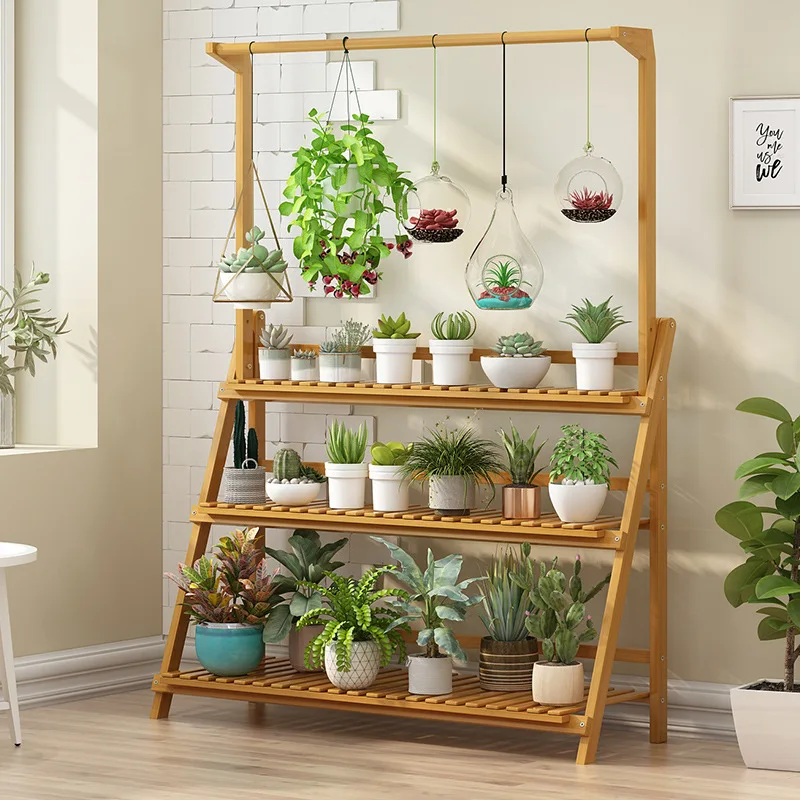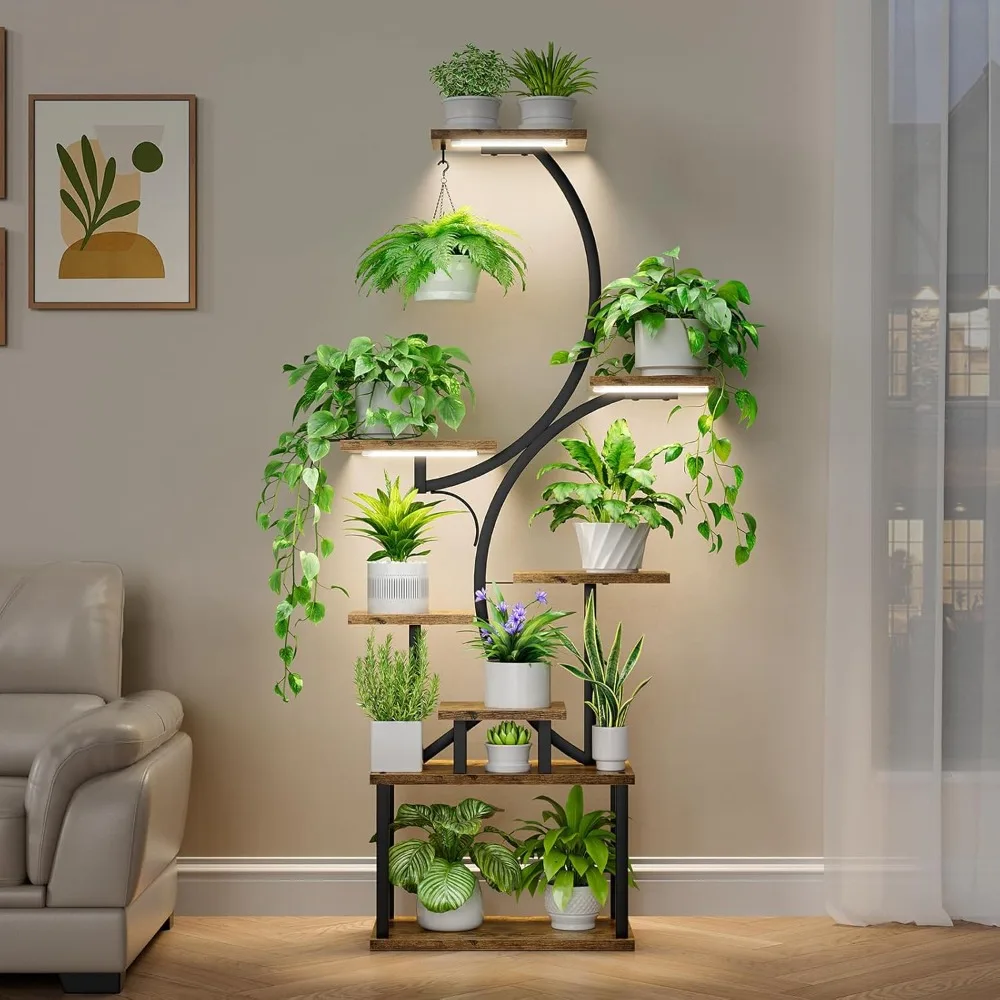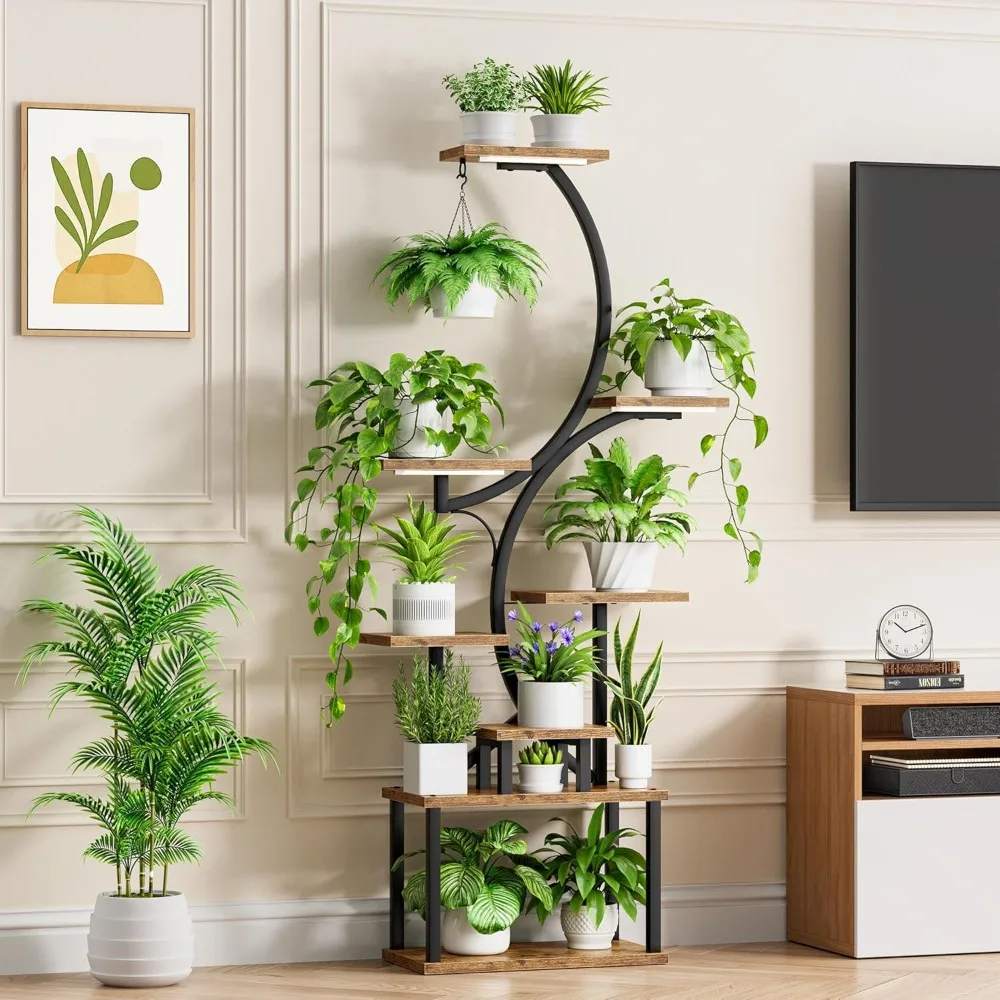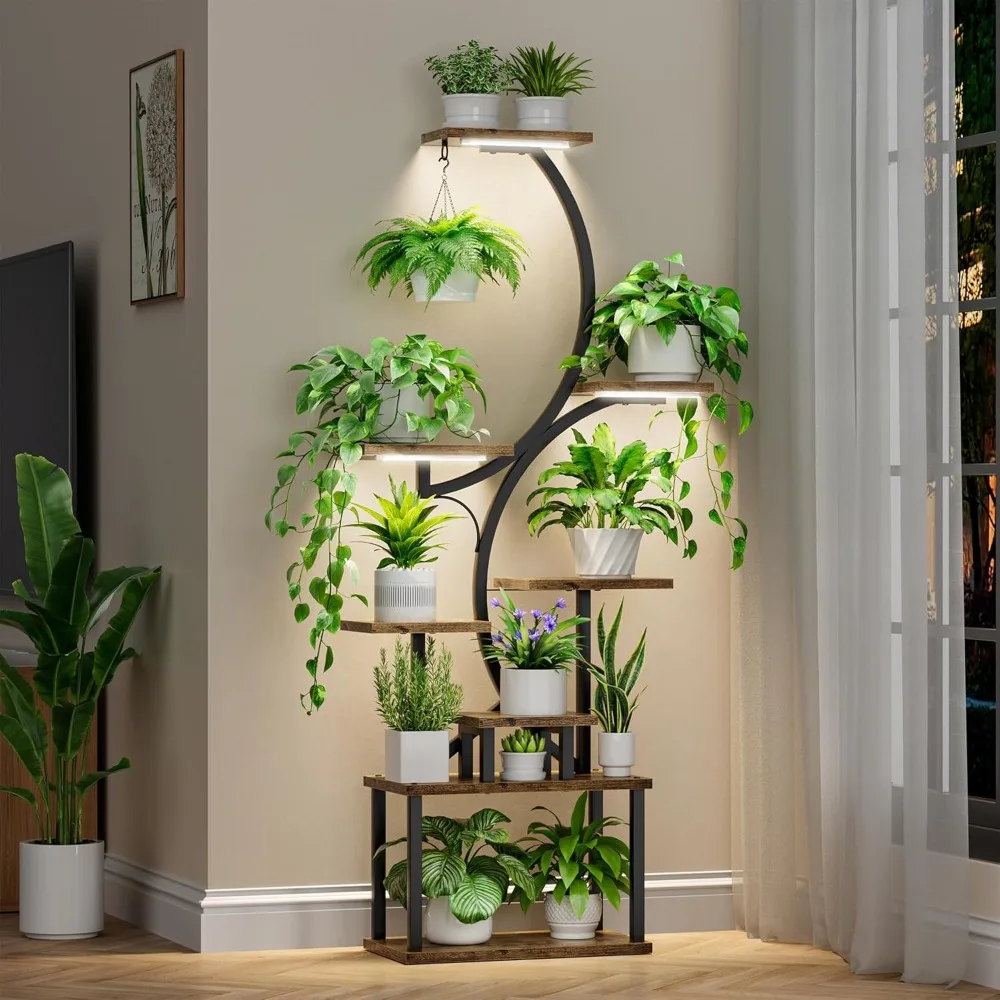Creating an indoor garden can bring life to your space, improve air quality, and provide a sense of tranquility. A well-designed plant shelf can serve as the perfect focal point, showcasing your plants while maximizing space. In this article, we will explore various creative plant shelf ideas to help you elevate your indoor garden.
Understanding the Benefits of Plant Shelves
Space Optimization
Plant shelves are an excellent way to make the most of limited space, especially in apartments or small homes. By utilizing vertical space, you can create an indoor garden without sacrificing floor area. Whether it’s a corner shelf or a full wall unit, the right shelving can turn any empty wall into a lush display of greenery.
Aesthetic Appeal
A thoughtfully arranged plant shelf can enhance the aesthetic appeal of any room. By choosing plants with varying heights, textures, and colors, you can create a visually striking display. This not only brightens up your living space but also creates a unique ambiance, making your home feel more inviting and warm.

Choosing the Right Shelving Unit
Material Matters
When selecting a shelving unit for your plants, consider the material. Wood, metal, and glass are popular options, each offering distinct advantages. Wooden shelves can provide a rustic or natural feel, while metal shelves can add a modern touch. Glass shelves allow light to pass through, creating an airy vibe that can benefit your plants.
Size and Structure
The size and structure of your shelving unit are crucial for both plant health and aesthetics. Ensure that the shelves are sturdy enough to hold your plants and that they provide enough space between each tier. Adequate spacing allows for air circulation, preventing mold and mildew while ensuring that plants receive sufficient light.
Selecting the Perfect Plants for Your Shelf
Light Requirements
Before you populate your plant shelf, consider the light requirements of each plant. Some plants thrive in low light, while others need bright, direct sunlight. If your shelf is placed near a window, you can choose a wider variety of plants. However, if it’s in a dimmer area, opt for low-light-loving plants like pothos or snake plants.
Plant Pairings
When designing your plant shelf, think about pairing plants with complementary characteristics. For instance, mix trailing plants like ivy with upright varieties like snake plants to create a dynamic display. This not only maximizes the visual appeal but also creates a sense of balance and harmony in your indoor garden.
Creative Arrangement Techniques
Layering Heights
One effective technique for arranging plants on a shelf is to vary the heights. Taller plants should be placed at the back or on higher shelves, while shorter plants can be in the front. This creates depth and ensures that each plant is visible. You can use plant stands or books to elevate shorter plants, adding layers to your arrangement.
Grouping by Theme
Consider grouping plants by theme or color to create a cohesive look. For example, you might create a shelf dedicated to succulents or herbs. Alternatively, you can group plants with similar leaf shapes or colors for a monochromatic display. This method not only looks appealing but also makes it easier to care for plants with similar needs.
Adding Decorative Elements
Use of Planters
Incorporating decorative planters can elevate the overall look of your plant shelf. Choose pots that complement your interior decor, whether it’s sleek ceramic, rustic terracotta, or trendy concrete. The right planters can enhance the beauty of your plants and tie the shelf into your home’s design theme.
Incorporating Accessories
Don’t forget to include accessories on your plant shelf. Decorative items like books, candles, or art pieces can add character and interest. Be mindful of balance, ensuring that the shelf doesn’t become overcrowded. The goal is to create a harmonious space where plants and decorative elements coexist beautifully.

Lighting Solutions for Plant Shelves
Natural Light
If your plant shelf is near a window, maximize natural light exposure by positioning it strategically. South-facing windows typically provide the most light, making them ideal for sun-loving plants. Use sheer curtains to diffuse harsh sunlight while still allowing light to filter through.
Artificial Lighting
In cases where natural light is limited, consider incorporating artificial lighting. Grow lights come in various styles, including bulbs, strips, and panels. These lights can provide the necessary spectrum for plant growth and can be easily integrated into your shelving design. Positioning them above or beside your plants can ensure they receive adequate light.
Maintaining Your Plant Shelf
Regular Watering
Maintaining a healthy plant shelf requires regular watering, but the frequency will depend on the plant types and environmental conditions. A good rule of thumb is to check the soil moisture before watering. Ensure that pots have drainage holes to prevent waterlogging, which can lead to root rot.
Fertilization Practices
To encourage healthy growth, consider fertilizing your plants during the growing season. Choose a balanced, water-soluble fertilizer suitable for your plant types. Follow the instructions on the label, and avoid over-fertilizing, as this can harm your plants. Regular feeding can keep your plants vibrant and thriving.
Seasonal Adjustments for Your Plant Shelf
Seasonal Plant Rotation
As seasons change, so do the needs of your plants. Some plants may thrive in summer but struggle in winter. Consider rotating your plants according to their seasonal preferences. For example, move summer bloomers to a sunnier spot during winter, while winter-hardy plants can be brought forward to receive more light.
Seasonal Decor Changes
Just as you adjust your plants, consider changing the decorative elements on your plant shelf to reflect the seasons. Incorporate seasonal decorations like small pumpkins in the fall or festive ornaments during the holidays. This adds a personal touch and keeps your indoor garden feeling fresh and lively throughout the year.

Troubleshooting Common Plant Shelf Issues
Dealing with Pests
Pests can be a common issue in indoor gardens. Regularly inspect your plants for signs of infestation, such as discolored leaves or visible bugs. If you notice pests, treat them promptly with organic insecticidal soap or neem oil. Maintaining a clean shelf and removing any dead leaves can also help prevent pest problems.
Managing Overgrowth
As plants grow, they may outgrow their space on the shelf. Regular pruning can keep plants healthy and well-shaped, preventing them from becoming leggy. For trailing plants, consider trimming back vines to promote bushier growth. If a plant becomes too large, you may need to relocate it to a larger pot or a different location.
Inspiration from Other Plant Enthusiasts
Social Media and Online Communities
One of the best ways to gather ideas for your plant shelf is by exploring social media platforms like Instagram and Pinterest. Many plant enthusiasts share their creative arrangements and shelving solutions. Join online communities or forums where you can exchange tips and find inspiration from fellow plant lovers.
Visiting Plant Shops and Botanical Gardens
Don’t underestimate the value of in-person experiences. Visiting local plant shops or botanical gardens can provide a wealth of ideas and inspiration. Observe how plants are arranged in different settings, and take note of the types of shelves used. You may discover unique styles that resonate with your vision for your indoor garden.
Conclusion: Your Indoor Garden Awaits
Creating a beautiful and functional plant shelf can dramatically enhance your indoor garden experience. By understanding the benefits, choosing the right materials, selecting suitable plants, and maintaining them properly, you can cultivate a thriving green space within your home. With creativity and care, your plant shelf can become a vibrant focal point, showcasing your love for plants while adding beauty and life to your surroundings. So gather your supplies, choose your favorite plants, and let your indoor garden flourish!
